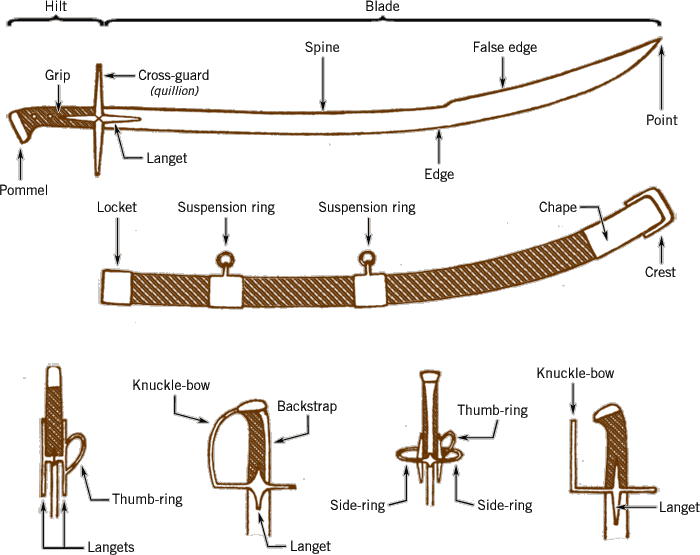

The pattern is then constructed and it is prepared on double sample: one to attach to the Fuchi, on one side, because the piece’s face would be performed by the triangular hole that may let the blade through, and the other sample is to place on the face of Kashira.

The metal is forged up on the dimensions of the Tsuka to help it sustain its form and stand the vibrations that may receive from the Tang. The unit is handmade the basic shape is prepared and tested on the Tsuka to fit the upper border and the lower order. Generally the pattern is made of shining metal to be visible when mounted on the katana, and that can be Gold, Silver, Copper, Brass or simply iron metal. The pattern can be made of the same material as the basic shape and can be made of different material. The basic shape of Fuchi Kashira is made of metal, generally Iron or alloys of soft metals. In simple words, Fuchi Kashira is the unit that limits the Tsuka, it is has toīe in continuity with the several ornamentation that the Tsuka may carry. Fuchi is therefore the piece that is in contact with the parts from the Blade side. As in the case of Saya and Tsuka, which are made of the same piece of wood and on the same way, Fuchi and Kashira are made the same way with the distinction that basically, Fuchi is equipped by a hole that intended to fit the blade and allow it through Kashira has a lateral hole that is visible from both sides that may serve to attach it on the Tsuka. Obviously, Fuchi will be performed with a triangular hole that allow the blade through, and that is the main difference between the two pieces of the unit Fuchi Kashira. Fuchi is the piece that covers and supports the upper part of the Tsuka Kashira covers and supports the lower part of the Tsuka.
Katana parts free#
They are placed on the Tsuka, the woody handle of the Katana and they have a protective role for the Tsuka against looseness since Tsuka holds the Katana Tang and that allows the blade to be easily controlled and handled by the user if the Tsuba loosen then the Tang would be free to move and that affects the Tsuka and may break it. Fuchi and Kashira are two pieces generally made of the same material and designed to look the same they carry the same engravers if there is anyĪnd they have the same patterns and ornamentation.


 0 kommentar(er)
0 kommentar(er)
